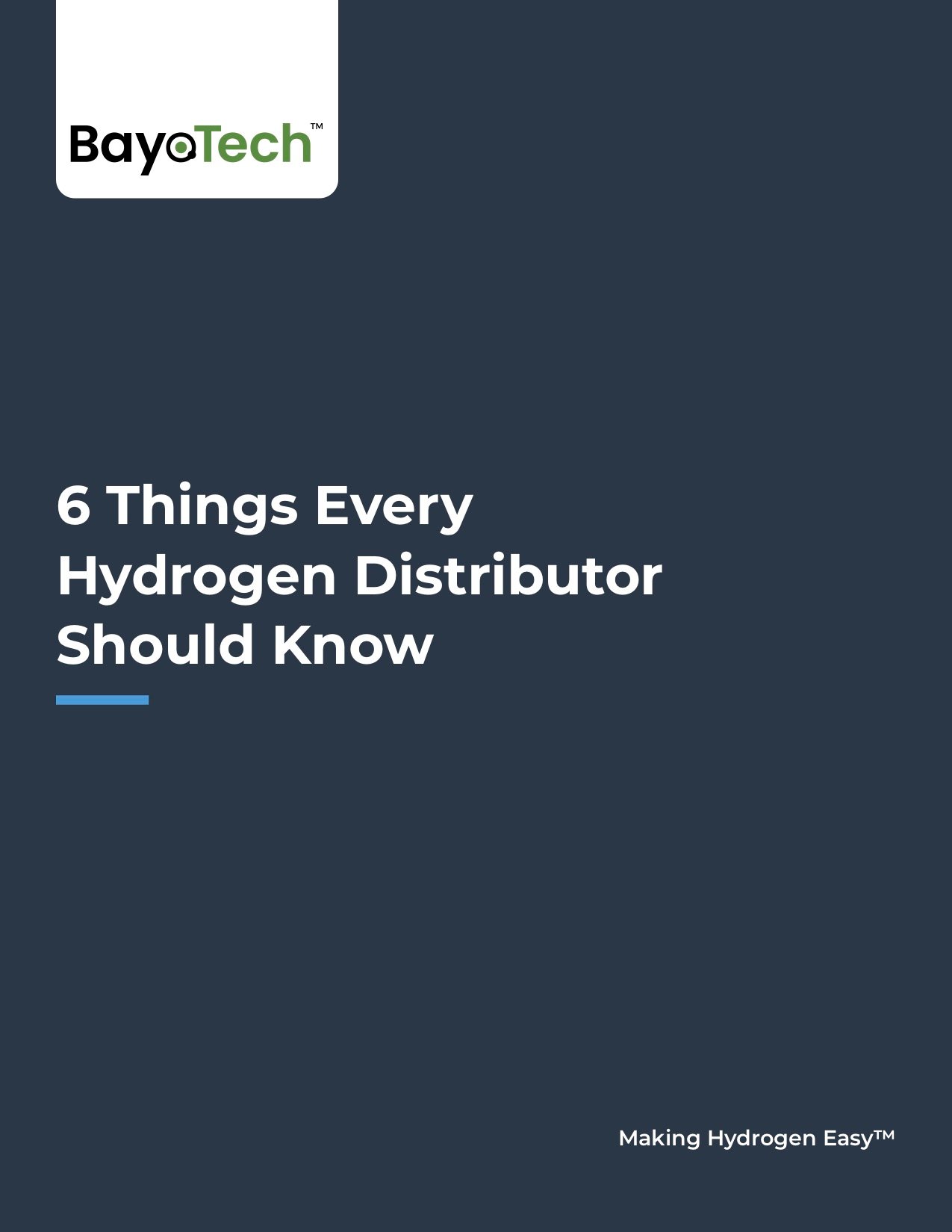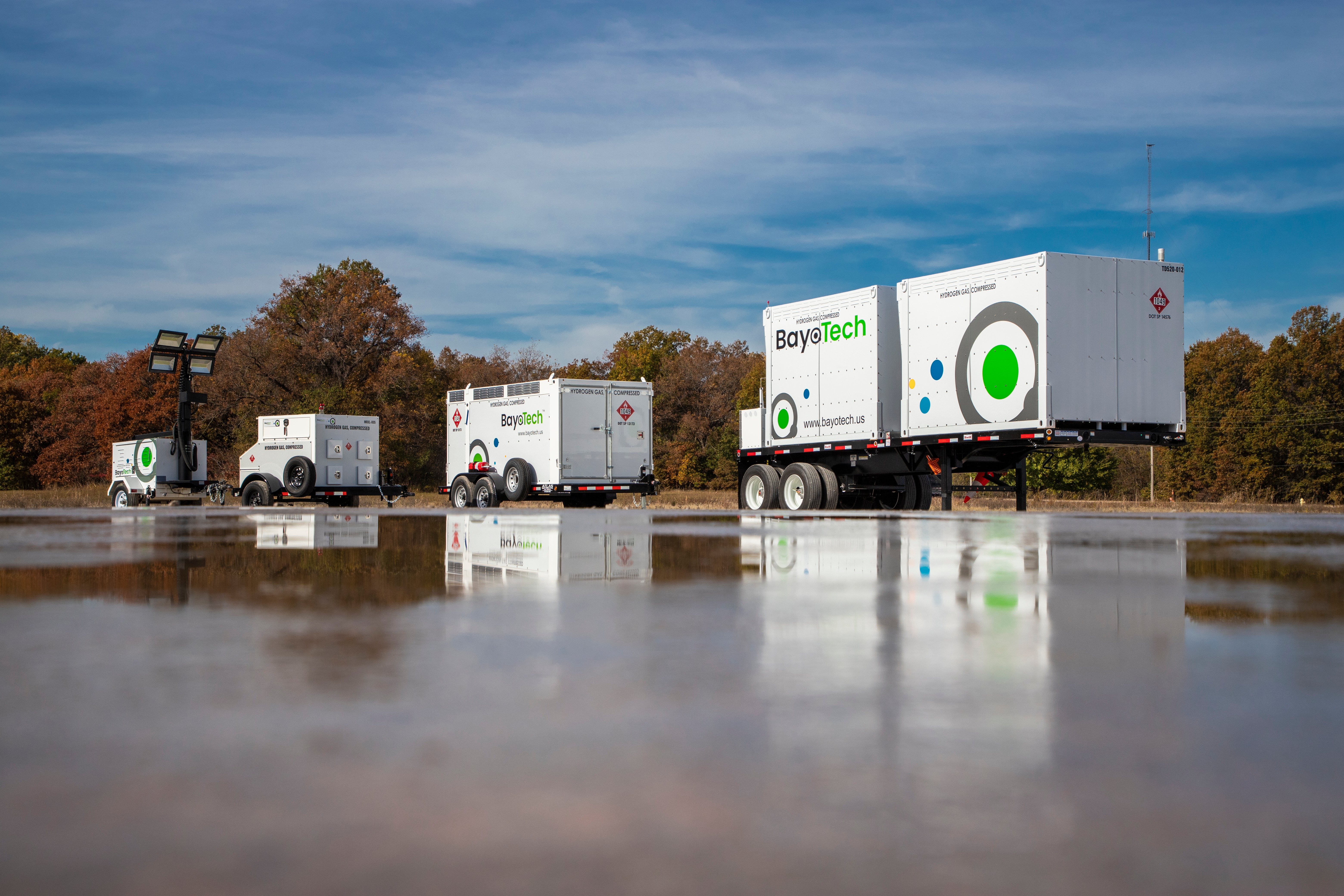The demand for reliable and affordable hydrogen transportation is growing rapidly as the hydrogen economy advances. For efficient movement of hydrogen from the point of production to the end user, high-pressure transportation is the critical solution for this demand. While there are multiple cylinder options for this transportation method, Type-III cylinders have clear advantages over others. They support transportation, storage, and dispensing solutions by providing lighter weight with higher pressure thresholds and durability.
To provide better insight into why Type-III cylinders are so successful in hydrogen transportation, we decided to go straight to our source, Luxfer. I sat down with two of their leading experts in cylinder technology, Bill Mezher, Technology and Innovation Manager, and John Coursen, Product Line and Regulatory Compliance Manager.
Tim: Bill, John, it’s a pleasure to speak with you. To get started, why don’t you tell us who Luxfer is and what you specialize in?
Team Luxfer: Luxfer’s mission is to help to create a safe, clean, and energy-efficient world. We pioneer advances in gas containment to improve the environment. With our 30+ years of experience in hydrogen technology, we have specialized in hydrogen fuel cell systems for buses, trains, and many other vehicles. We are committed to achieving net-zero emissions and engaging in new hydrogen product development to accomplish these standards. Several major aerospace companies, vehicle OEMs, hydrogen producers, and hydrogen suppliers have been using Luxfer’s Type-III cylinders for storing and transporting hydrogen since 1961. You can find out more about us at https://www.luxfercylinders.com/products/alternative-fuel
A Focus on Hydrogen
Tim: What’s unique about transporting hydrogen?
Team Luxfer: Hydrogen is a complex gas requiring special trailer design considerations compared to other gasses. Hydrogen has a very broad flammability range (4 - 74% concentration in air), a very low ignition energy, a high specific heat, and a negative Joule-Thomson coefficient which can cause the hydrogen to heat up when expanding into a cylinder during the filling process. Hydrogen is also an exceptionally small molecule that readily leaks and permeates through some storage materials.
Special care must be taken to use materials that do not leak or permeate hydrogen, tolerate the heat that can develop when filling, and enable trailer filling within a reasonable time. Even with these precautions, hydrogen must be stored in a sufficiently ventilated environment to prevent unexpected accumulations of the gas.
Tim: What are the pros and cons of Type-III vs. IV cylinders?
Team Luxfer: Several design elements give each cylinder type varying degrees of pros and cons, but here are some of the key elements of each:
Type-III pros:
- One-piece seamless aluminum liner
- Leak before rupturing by design
- High impact resistance
- Fast fill capabilities
- Impermeable for gasses
Type-III cons:
- Higher raw material cost vs. plastic
- Limitations with available tube sizes
- Significant investment is required for liner manufacturing
Type-IV pros:
- High fatigue resistance
Type-IV cons:
- Lower impact resistance
- Reduced heat transfer
- Fast filling limitations
- Electrostatic charge possible
- Permeation through plastic liner and shell
- Thermal cycling could influence lifetime
Tim: How do these design traits factor into the design of Luxfer’s cylinders?
Team Luxfer: Today, Luxfer manufactures both Type-III and Type-IV cylinders. We provide type-IV solutions for large diameter, large capacity cylinder applications due to the cost and weight advantages. However, we typically offer Type-III solutions for smaller than 18” diameter applications. Larger diameter cylinders are typically desired when the application requires fewer cylinders in a particular system or bulk transit unit. Weight requirements for certain applications also drive demand for large diameter type 4 cylinders due to the ability to increase the payload.
Tim: How are the Type-III Luxfer cylinders that BayoTech uses made?
Team Luxfer: There are several steps involved in producing high-quality Type-III cylinders. First, we must perform a detailed inspection of the aluminum tube and then we machine and port each end of the tube to create a liner. Next, the liner is subject to multiple heat treatments, carbon fiber wrapping, curing, and sanding. It’s a long but necessary process to meet industry standards. We also perform hydro testing to look for potential leaks and apply a UV coating for extra protection, followed by thorough inspections before we ship them out to your team.
Our light-weighting technology combined with the strength of the carbon fiber overwrap creates a lightweight structure that can deliver a high safety factor and, ultimately, durable cylinders.
Focus on Safety
Tim: What are safety considerations when transporting compressed gas?
Team Luxfer: First and foremost, we must ensure compliance with regulations and standards. The cylinders shall be approved for usage with the appropriate gas, in this case, hydrogen, and the appropriate pressure. This also applies to any accessory that contacts the hydrogen gas. The pressure and temperature limits should not be exceeded during filling and emptying. The transportation unit should be leak-free; during transportation, each cylinder should be isolated, and its valve closed.
Tim: What are the safety features of the cylinders themselves?
Team Luxfer: The cylinders are designed to meet national and international standards and regulations, they are approved for hydrogen usage at high pressure, and they have undergone a rigorous qualification testing regime that includes extreme temperature testing, drop and impact testing, gunfire testing, fatigue cycle, and burst testing. Each cylinder is equipped with a temperature relief device that protects the cylinder in case of a thermal incident.
Conclusion
BayoTech has been a long-time proponent of Type-III cylinders for its high-pressure transportation equipment. With 700 trailers in service, many used by the largest industrial gas suppliers in the U.S., we’ve seen a growing adoption of our solutions and see Type-III cylinders as the future of hydrogen transportation.
Partnering with industry leaders like Luxfer has helped BayoTech become an industry leader in the transportation and storage of hydrogen. With over 30 years of experience in the hydrogen industry, they have intimate knowledge of the rigorous requirements to contain hydrogen at high pressures while maintaining the highest safety standards. As hydrogen transportation and storage demand continues to grow, we look forward to providing Luxfer’s industry-leading cylinders in our high-pressure equipment.




